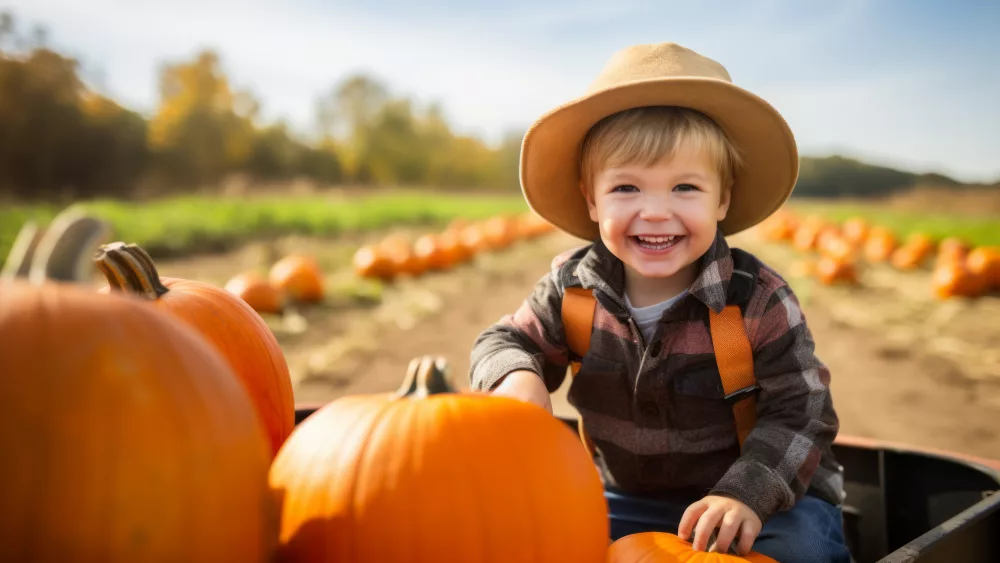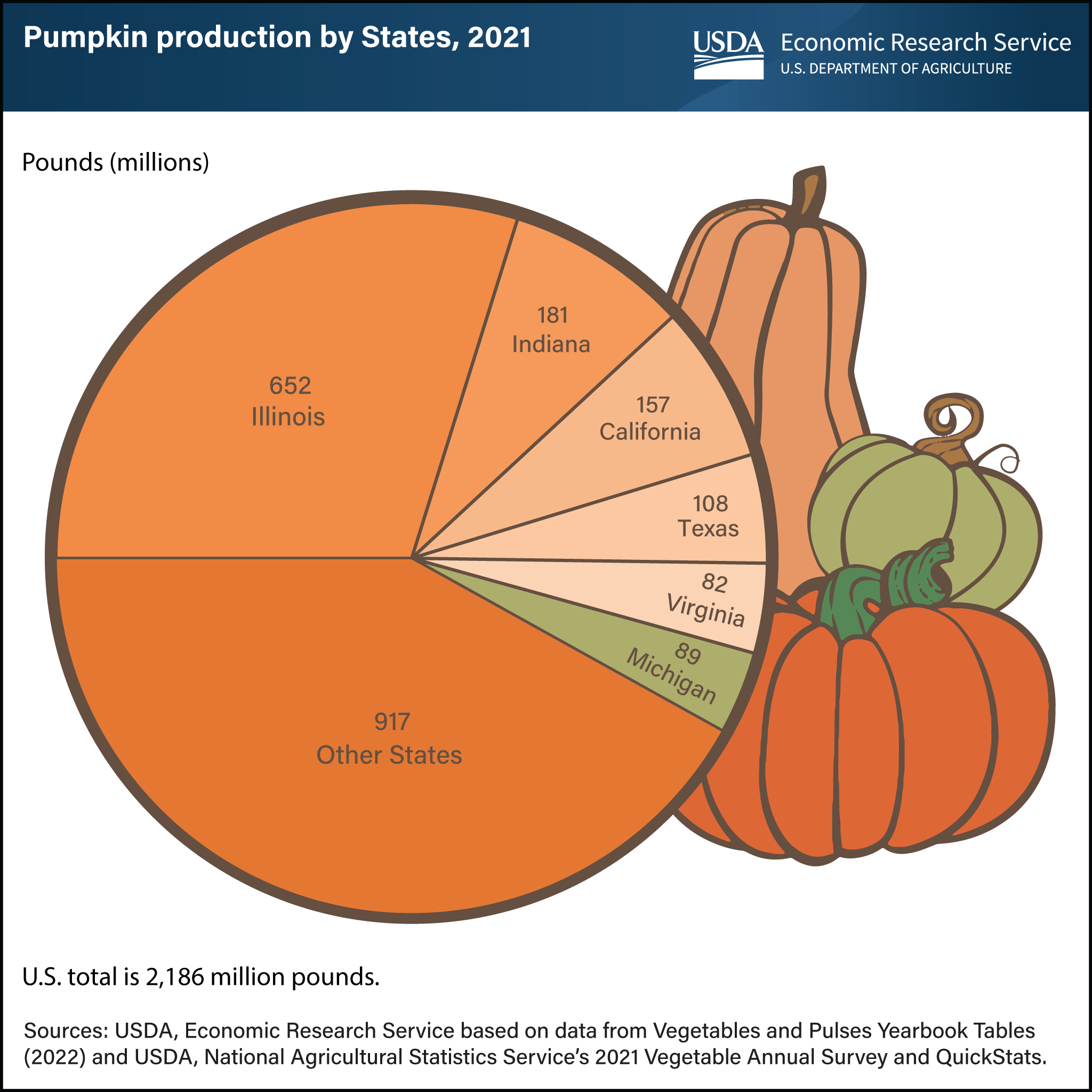I love to see all the roadside pumpkin stands every fall, and I usually do my part to help a local farmer with the purchase of a pumpkin or two at the very least. In fact, National Pumpkin Day is coming up on October 26. Pumpkin-based foods and pumpkin spice flavorings are seasonal favorites of many people.
According to the U.S. Department of Agriculture’s 2017 Ag Census, Indiana’s farmers grew 5,330 acres of pumpkins on 432 farms, mostly for the fresh market.
The Indiana Field Office of USDA’s National Agricultural Statistics Service reported that in 2021, Indiana ranked 2nd among states in pumpkins produced, 10.9% of the nation’s production. We were topped only by Illinois. Indiana’s pumpkin production was valued at $26,517,000.
Pumpkins are cucurbits, along with cucumbers, melons, squash, and gourds. Whether you enjoy growing, eating, or carving pumpkins, they are some of the most popular vegetables grown and enjoyed by Indiana residents.
Dr. Rosie Lerner, Purdue consumer horticulture specialist (retired), wrote in her publication on growing cucurbits, “Pumpkins are available in several sizes: small (4-6 pounds), for cooking and pies; medium (8-15 pounds) and large (15-25 pounds), for cooking and jack-o’-lanterns; and jumbo (50-100 pounds), for showing at fairs and exhibits.” She added that there are also naked-seeded or hull-less cultivars for roasting seed. Bush and semi-vining cultivars are used for small gardens.
Lerner said pumpkins should be harvested when they have a deep, solid color and the rind is hard. The vines will usually be dying back at this time. Cover during a light frost and avoid leaving pumpkins out during a hard frost to prevent softening.
Dr. Liz Maynard, Purdue commercial vegetable crop specialist, offered the following purchasing tips for consumers looking to take advantage of the state’s fall pumpkin harvest:
- Choose pumpkins that are fully mature, meaning the fruit is completely orange and the rind is tough.
- Make sure the pumpkin is solid and has no soft spots or unhealed wounds in the rind.
- Select a pumpkin with a healthy stem that is firmly attached. The stem should be solid, not shriveled. Check that the stem is attached by inspecting it – not by lifting the pumpkin by the stem.
- For jack-o’-lanterns, avoid hard-shell pumpkin varieties because they are much harder to carve.
Many consumers look for pumpkins not to carve, but to eat.
“If the pumpkin will be used for eating, I would recommend selecting a pie pumpkin and, ideally, talking with the producer to find out whether or not it is a variety known to be good for eating,” Maynard said.
Local residents have several options for buying pumpkins. Some local producers and roadside stands have pumpkins available, along with many of your favorite garden centers and retail outlets.
Find more information on pumpkins and cucurbits at www.edustore.purdue.edu.
Written by: John E. Woodmansee, Extension Educator at Purdue Extension—Whitley County.






